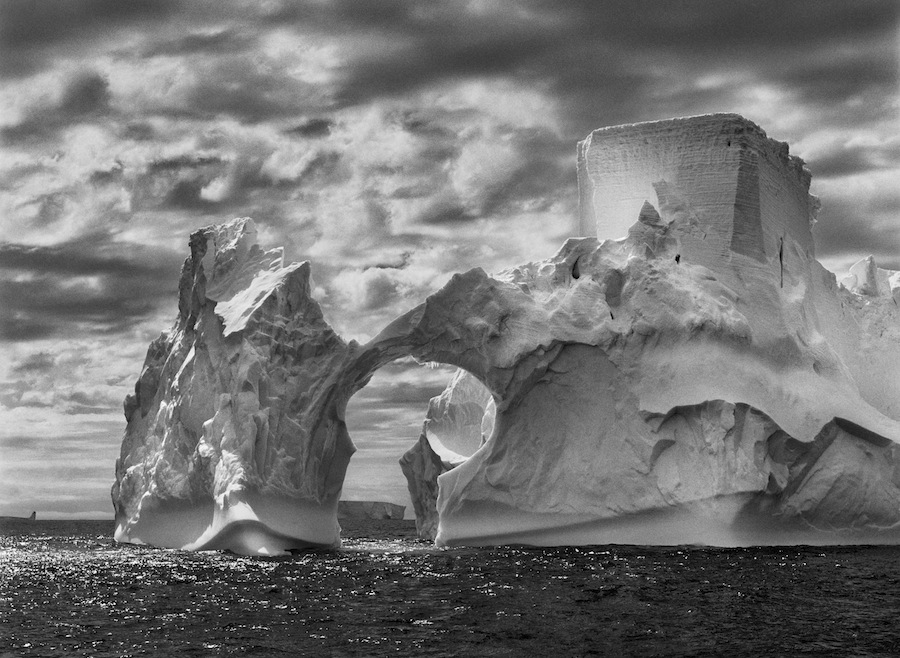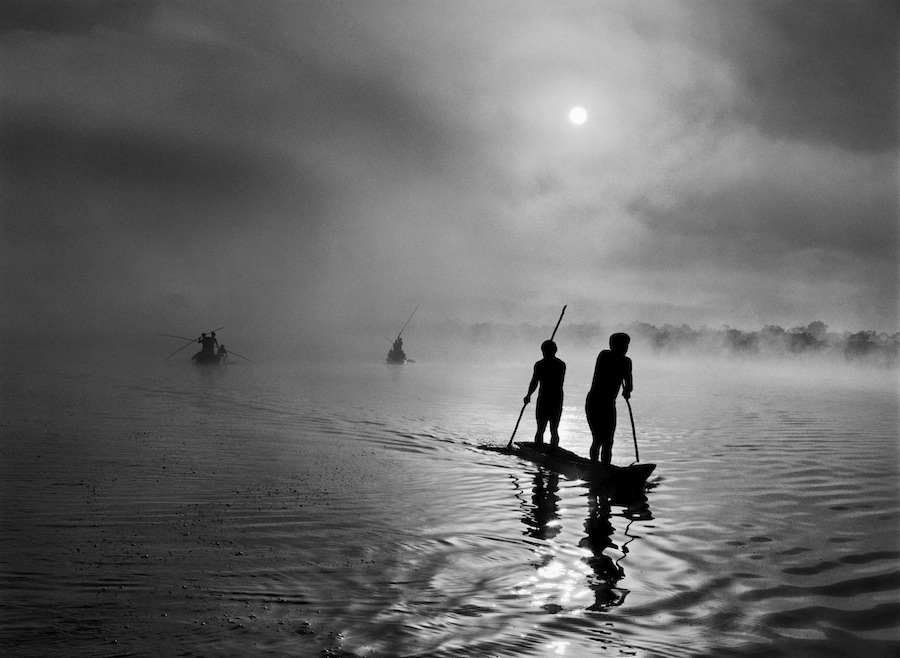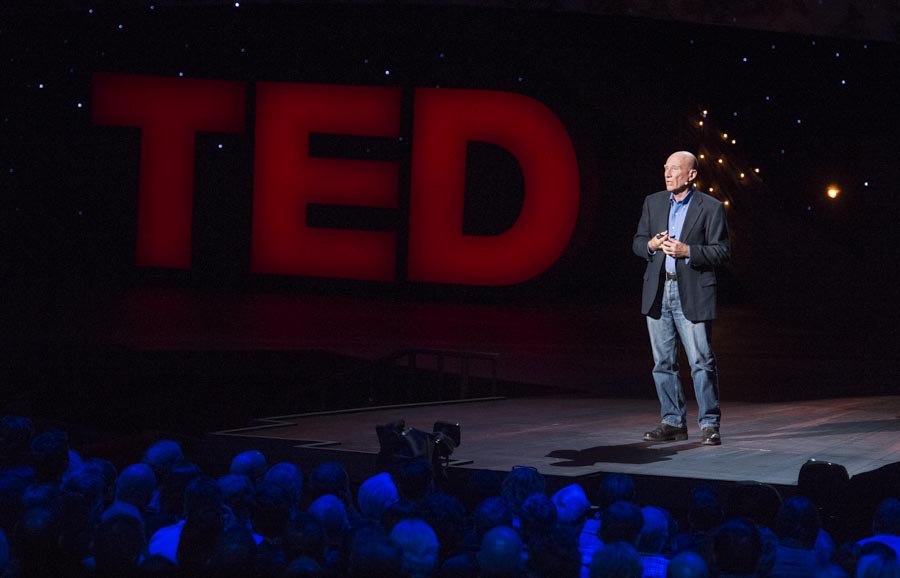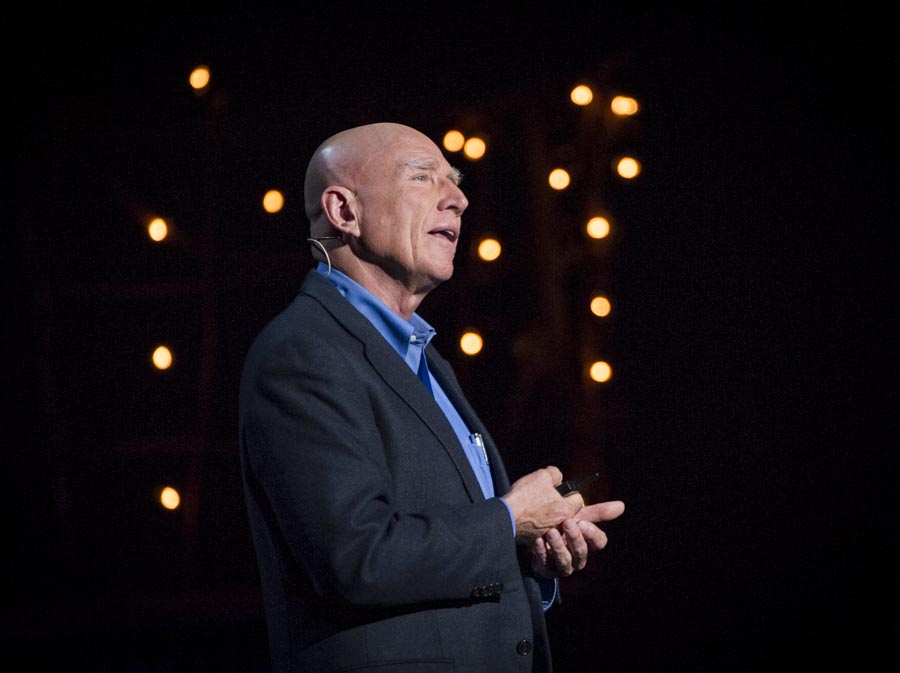Sebastião Salgado has worked as a professional photographer since 1973. And he arrives on the TED stage with extraordinary gentleness and humility. He doesn’t think everyone is necessarily familiar with his work, so he starts by showing some of his incredible pictures, and we watch in silence. The images make for powerful, often difficult viewing. It’s clear that Salgado has traveled the world and shot the stories of so many people who are not regularly given a face. The pictures seem other-worldly; so beautifully staged and shot that it’s difficult to remember that this is real; this is photojournalism.
He starts by telling us some of his story, of being born on a farm in Brazil in 1944. It was a paradise, he says, of more than 50% rain forest that supported some 35 families. They ate everything they produced and were almost entirely self-sufficient. He left the farm when he was 15 years old, to move to the big city to start secondary school and another life, learning about politics and radicalism, becoming a “leftist,” studying to become an economist and, most important, meeting his “best friend all my life long,” Lelia Wanick, later to become Lelia Wanick Salgado, his wife and his companion to this day.
Politics intervened. A rapidly industrializing Brazil became unstable and an untenable place in which to live, and so the Salgados moved to France. It was there that at the age of 30, Sebastião discovered photography, the discipline that was to become his passion, his life. “I lived totally inside photography, doing long term projects.” He shows the audience another series of pictures that are epic in scale. Again we watch, in silence.
In the 1990s, Salgado photographed Migrations, traveling around the world to document just some of the many millions of people who have been uprooted from their homes by poverty, wars and repression. He saw deaths by the thousand–and the work took its toll. He became physically ill himself. Yet when he went to see a doctor, he found out that he wasn’t sick at all. “He says ‘You are not sick. What happened was you saw much death, you are dying. You must stop. Stop!'” Salgado agreed. He returned to his home in Brazil–and to the farm on which he had grown up.
He began shooting the project, known as Genesis, back in 2004, shooting through to 2009. And while he may have focused on documenting nature, people and humanity are still central themes, as he photographed tribes and people who live far from the so-called advances of the modern world. He shows us some of these images too (below). The ethereal, otherworldly beauty of the black-and-white shots is again extraordinary.

The Antarctic Peninsula. 2005. Iceberg between Paulet Island and the South Shetland Islands on the Antarctic Channel. At sea level, earlier flotation levels are clearly visible where the ice has been polished by the ocean’s constant movement. High above, a shape resembling a castle tower has been carved by wind erosion and detached pieces of ice. Courtesy Taschen.
Salgado is here with a call to arms. We must rebuild our forests, he says, just as he has done on his family’s land in Brazil. The destruction of the rainforest, of redwood trees in California, is unacceptable. It is simply the only way to capture carbon, to create the oxygen the planet needs to survive and thrive. Salgado makes a comparison: if you have a lot of hair, it might take two or three hours to dry your hair. “Me?” he says drily, stroking his bald head. “One minute.” It’s a funny moment, but he’s making a serious point. “The trees are the hair of the planet,” he says.

Brazil. 2005. In the Upper Xingu region of Brazil’s Mato Grosso state, a group of Waura Indians fish in the Puilanga Lake near their village. The Upper Xingu Basin is home to an ethnically-diverse population, with the 2,500 inhabitants of 13 villages speaking languages with distinct Carib, Tupi and Arawak roots. While they occupy different territories and preserve their own cultural identities, they co-exist in peace. Courtesy Taschen.
The photographer concludes by showing some breathtaking before-and-after pictures of his farm in Brazil. We see the erosion, the dried soil, the arid landscape of the home to which he returned. And then we see a shot from two months ago, with the forest almost entirely retored. They haven’t managed to plant all the needed 2.5 million trees yet, but two million are planted, with the resulting sequestration 100,000 tons of carbon. It’s an uplifting end to a sobering talk.
An exhibition of 250 images from “Genesis” premieres at the Natural History Museum in London in April, before touring to Toronto, Rio de Janeiro, Rome, and Paris.
Sebastião Salgado’s talk is now available for viewing. Watch it on TED.com»


Comments (6)
Pingback: Four Ideas for Photography Inspiration | Cities at Dawn
Pingback: Sebastião Salgado explains why we should do our best to replant our forests at TED2013 AnonHQ
Pingback: MAGIC VIDEO HUB | Field, fuel & forest: Fellows Friday with Sanga Moses
Pingback: Field, fuel & forest: Fellows Friday with Sanga Moses | TokNok Multi Social Blogging Solutions